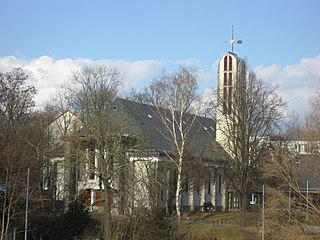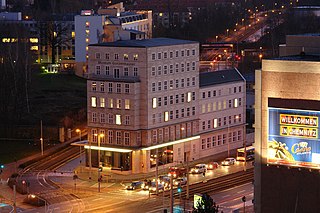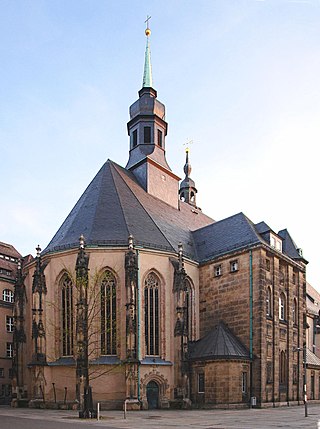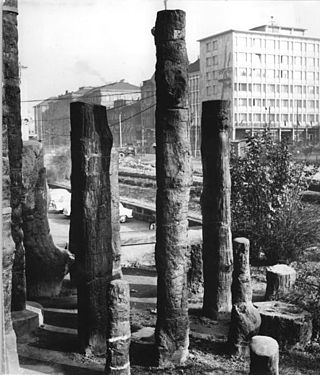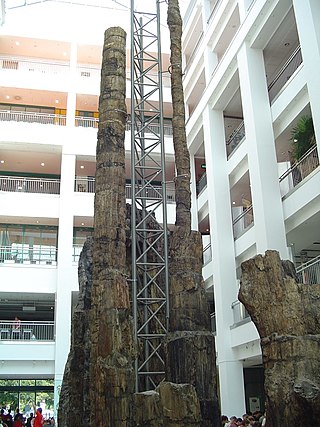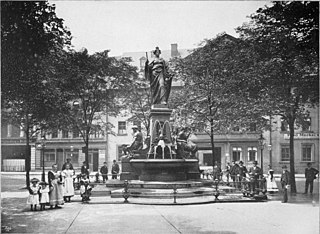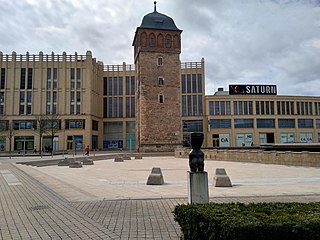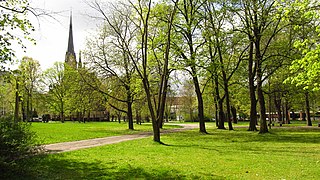Self-guided Sightseeing Tour #2 in Chemnitz, Germany
Legend
Tour Facts
3.7 km
65 m
Experience Chemnitz in Germany in a whole new way with our free self-guided sightseeing tour. This site not only offers you practical information and insider tips, but also a rich variety of activities and sights you shouldn't miss. Whether you love art and culture, want to explore historical sites or simply want to experience the vibrant atmosphere of a lively city - you'll find everything you need for your personal adventure here.
Individual Sights in ChemnitzSight 1: Dr. Hugo Fuchs
Hugo Chanoch Fuchs was a German rabbi and Jewish historian.
Sight 2: Propsteikirche St. Johannes Nepomuk
The Provost's Church of St. John of Nepomuk is a Roman Catholic church in Chemnitz, Germany. Today's church was built between 1953 and 1955 according to a design by the Chemnitz architect Willy Schönefeld. The church is located in the southeast of the district of Kaßberg and borders on Reichsstraße and Hohe Straße.
Sight 3: Museum Gunzenhauser
The Gunzenhauser Museum is a museum and art gallery located in Chemnitz, the third largest city of Saxony, Germany. It contains 2,459 works by 270 modern artists of the 20th century that have been collected by the art dealer Dr. Alfred Gunzenhauser. The Gunzenhauser Museum was inaugurated in December 2007 in the presence of German President Horst Köhler and is one of the most important museums of modern art in Germany.
Sight 4: Sankt Jakobi
The Protestant town church of St. Jakobi is one of the oldest surviving sacred buildings in the Saxon city of Chemnitz and is located in the immediate vicinity of the Old and New Town Halls.
Sight 5: Versteinerter Wald
The Chemnitz petrified forest is a petrified forest in Chemnitz, Germany, that is part of the Early Permian Leukersdorf Formation.
Sight 6: Museum für Naturkunde Chemnitz
The Museum für Naturkunde Chemnitz is a natural history museum founded in 1868 in Chemnitz, Saxony. In addition to a collection of over 300,000 exhibits, the museum houses the Sterzeleanum, a historical cabinet, the insectarium and changing special exhibitions. In the large atrium of the DAStietz Cultural Centre, the location of the museum, is the Petrified Forest, the largest plant fossil in Europe.
Sight 7: Saxoniabrunnen
The Saxonia Fountain, which once adorned Chemnitz's Roßmarkt, has been on the redesigned Johannisplatz since the beginning of July 2011. The existing base and the attachment were restored. The bronze figures of the blacksmith and spinner on the sides, as well as the figure of Saxonia, which fell victim to a metal donation during the war, were recast with donations. Instead of the former two-tiered pedestal, the fountain was placed on a single-stage pedestal during the reconstruction. According to the chairman of the Saxonia Fountain Association, Peter Fritzsche, the former fence was intentionally omitted during the reconstruction, so that people can approach the fountain and experience it more consciously. The newly cast "Saxonia" is considerably smaller than the original and somewhat simplified in design. For example, the large Saxon coat of arms, which used to explicitly identify the figure as a personification of Saxony.
Sight 8: Roter Turm
The Red Tower is the landmark of the city of Chemnitz and its oldest surviving building. It was built towards the end of the 12th century and initially served as a keep to protect the surrounding settlements, later it was the seat of the city bailiff. The tower was probably integrated into the Chemnitz city fortifications as early as 1230.
Sight 9: Lob der Partei
The list of cultural monuments in Chemnitz-Zentrum, A–M lists the cultural monuments of the Chemnitz district of Zentrum that were recorded by the Saxony State Office for the Preservation of Monuments until June 2022 and whose address begins with the corresponding first letters. The notes are to be observed.
Wikipedia: Liste_der_Kulturdenkmale_in_Chemnitz-Zentrum,_A–M (DE)
Sight 10: Schillerplatz
Schillerplatz in Chemnitz is a park in the center of the city center. It was given its name in 1859 on the occasion of the 100th birthday of Friedrich Schiller and has been expanded according to plan since 1890.
Share
How likely are you to recommend us?
Disclaimer Please be aware of your surroundings and do not enter private property. We are not liable for any damages that occur during the tours.
GPX-Download For navigation apps and GPS devices you can download the tour as a GPX file.
